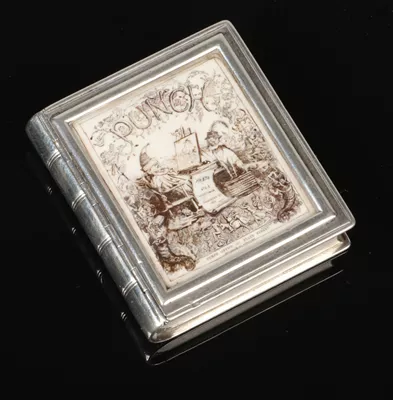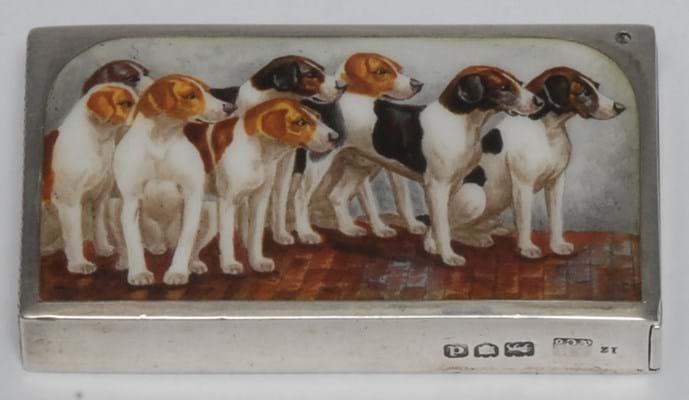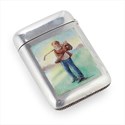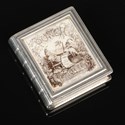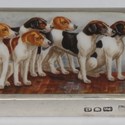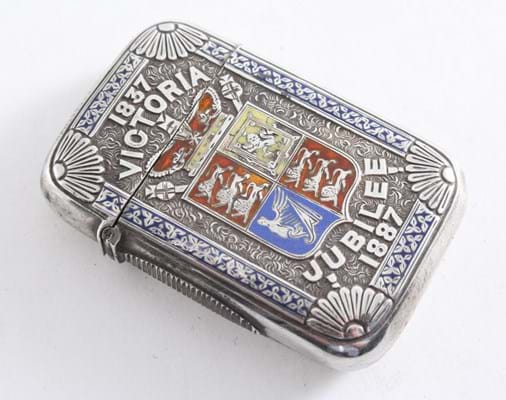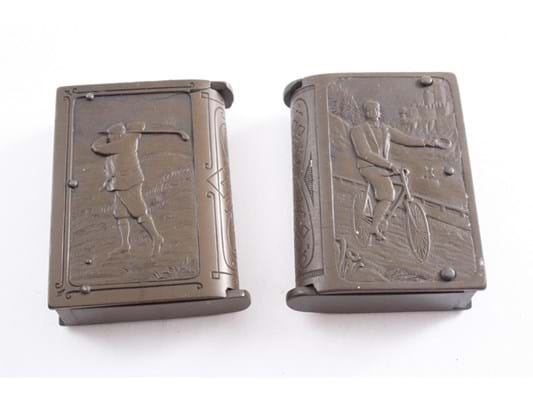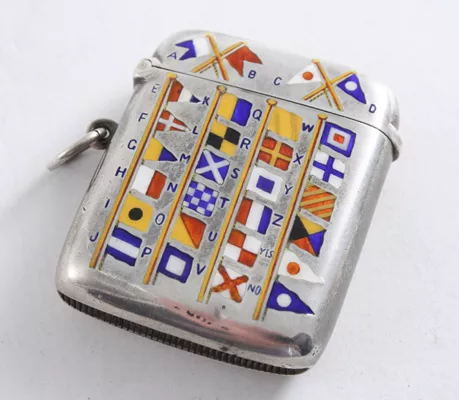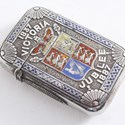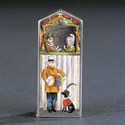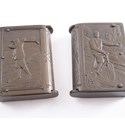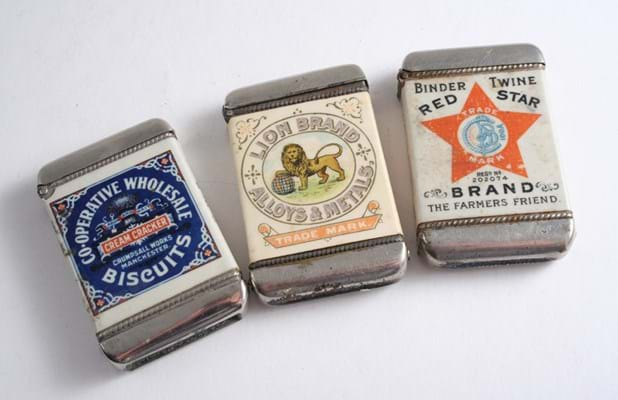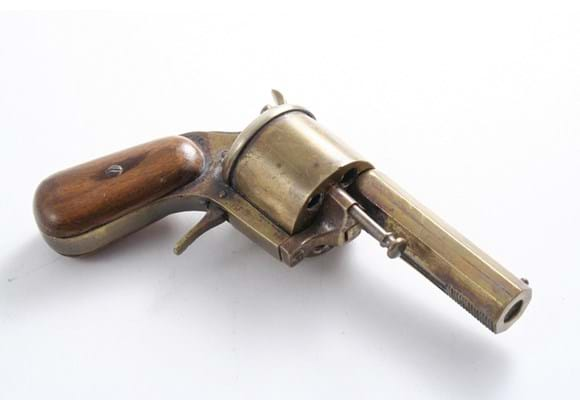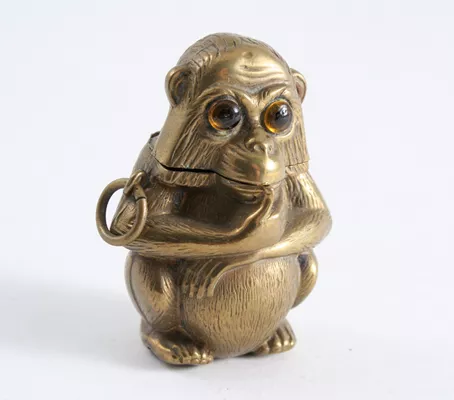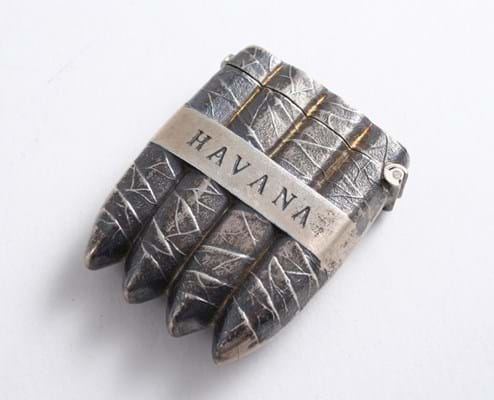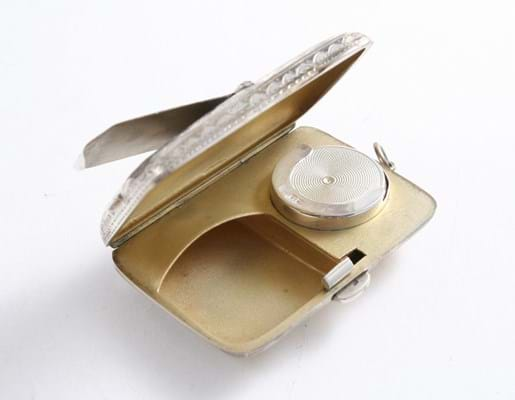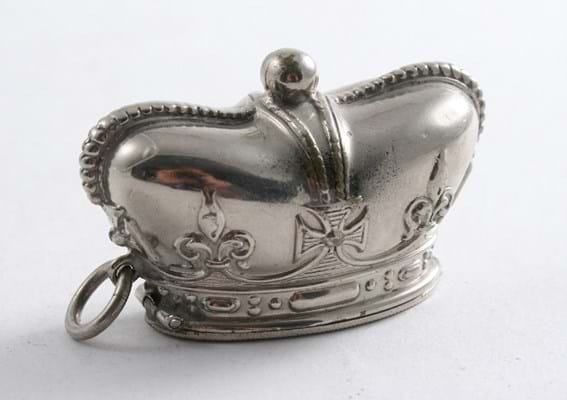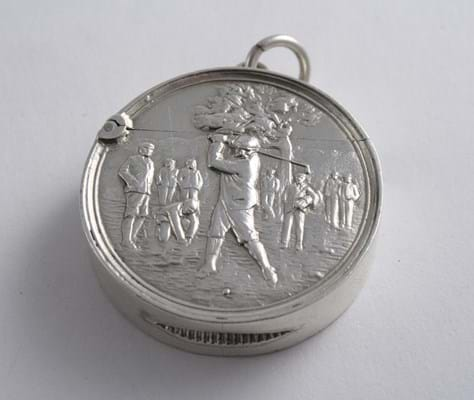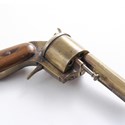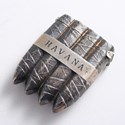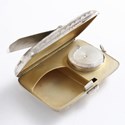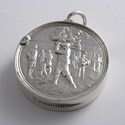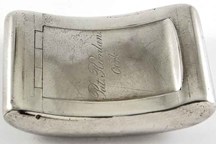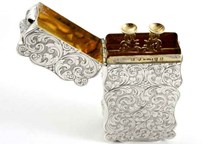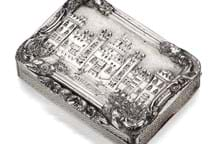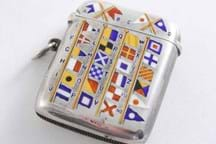When they first came into use in the 1830s, friction matches were hazardous and could combust without warning, so vesta cases were something of a necessity.
But as their production became more sophisticated, they came to say much about the status, wealth and personality of their owner. Part of the essential 'dress code' of the late Victorian and Edwardian eras, they were made in a range of materials and in a bewildering number of forms, from the purely functional to the deluxe and the novel.
In short, with such a huge scope in terms of variety and price levels, these are perfect collectables.
What Do People Collect?
While the first 'strike anywhere' matches appeared on the market at the end of the Georgian era (the English chemist John Walker marketed a sulphur-tipped splint called a Congreve as early as 1827) the vesta box had its hey-day during the decades either side of 1900.
In America, in Europe and in Japan they were produced extensively from the 1880s (when the fashion for cigarette smoking began) to the 1920s when they were superseded by the more durable and functional petrol lighter and the throwaway 'matchbook' - the small paperboard folders enclosing a quantity of 'tear-off' matches that emerged as a popular vehicle for commercial advertising in the early 20th century.
Petrol lighters and matchbooks both have their own collecting followings outside the area of vesta cases.
Given that almost every Edwardian carried matches, to light not just a 'smoke' but also stoves and lamps, the range of vesta boxes is huge.
The common man carried his matches in a straightforward box made of tin, gunmetal or vulcanite - perhaps a promotional giveaway advertising a popular brand.
Those a rung further up the social scale could perhaps afford a silver box or a plated brass novelty. The wealthy would carry a box fashioned in silver, enamel or gold by Gorham and Tiffany in New York, or by Asprey, Sampson Mordan and Henry William Dee in London.
Adapted from the Georgian snuffbox, the typical vesta case was a shaped rectangle with a flip-top lid, a serrated edge or a ribbed 'strike' on its base, and a link to attach a watch chain. The vast majority of these, made by the silversmiths in Birmingham, are plain or simply engraved/chased with initials or fashionable motifs. These become more desirable when set with semi-precious or precious stones or decorated with enamel sporting scenes, gambling motifs, advertising logos, club crests or alluring semi-clad woman.
There are also 'combination' vestas that incorporate additional features (such as cigar cutters, a small knife blade or apertures for sovereigns or stamps) and the larger standing or 'table' vestas made for use at home by the hearth or in the smoking room.
But alongside the straightforward rectangular or cylindrical box, a myriad of novelty shapes have been recorded, from corsets to coffins, pigs to Mr Punch.
Many were made in brass rather than silver but the forms are extremely attractive to collectors.
The Market
Vesta cases being small, portable and easy to describe, the market for them has prospered in the era of online trading. Founded in 1998 by a handful of enthusiasts from three countries, the International Match Safe Association now has members from the United States, England, Canada, Australia, Scotland, Ireland, Belgium, Portugal, Germany, Japan, Israel and New Zealand.
The range in prices of the items they collect is as wide as the objects themselves. Straightforward examples in base metal will cost just a few pounds, most Edwardian silver vestas bring £20-50 at auction, while some of the more common brass novelties (pigs, violins, rooster heads, Mr Punch) can be bought for under £100.
However, prices rise into the hundreds for scarcer forms. Some of these have cross-market interest. Many vesta cases are admired by collectors of small silver novelties while those based on themes such as the railways, the theatre, royal commemoratives, commercial advertising or sports and pastimes (golf bags, rugby balls, football boots, fishing creels and the like) command interest from several collecting quarters.
Many of the most desirable English vesta cases are late 19th century boxes with enamel decoration by Sampson Mordan & Co. At the highest level are a series of boxes modelled as sentry boxes occupied by variously enamelled guards (£1500-5000), boxes enamelled with Victorian golfers or hunting scenes (£1500-5000) or those enamelled with a seaside Punch and Judy tent, featuring Mr Punch, Judy, Toby the Dog and a drummer (£5000-plus).
Greater sums still have been paid for some of the finest American-made match safes.
The large premiums placed upon enamelled boxes have seen a number of forgeries on the market. It pays to be aware of originally plain vesta cases that have been recently decorated with commercial scenes, typically of a sporting, gambling or erotic nature.
These aside, condition is always important. Splits to seams, dents, rubbed hallmarks, broken springs or damage to hinges will impact price.
Further Reading
Match Holders 100 Years of Ingenuity by Denis Alsford, 1994, ISBN-13: 978-0887406331.
Pocket Matchsafes, Reflections of Life & Art 1840-1920 by Eugene and Christine Sanders, Schiffer Publishing 1997. ASIN: B0088P6SD2.
Japanese Match Safes by Neil Shapiro, 2012. See www.matchsafescholar.com/books.asp



